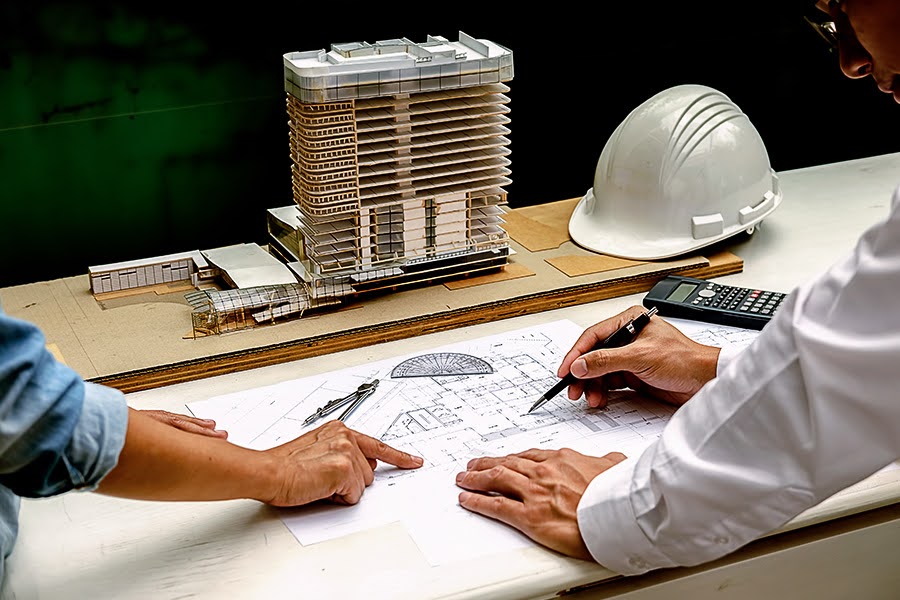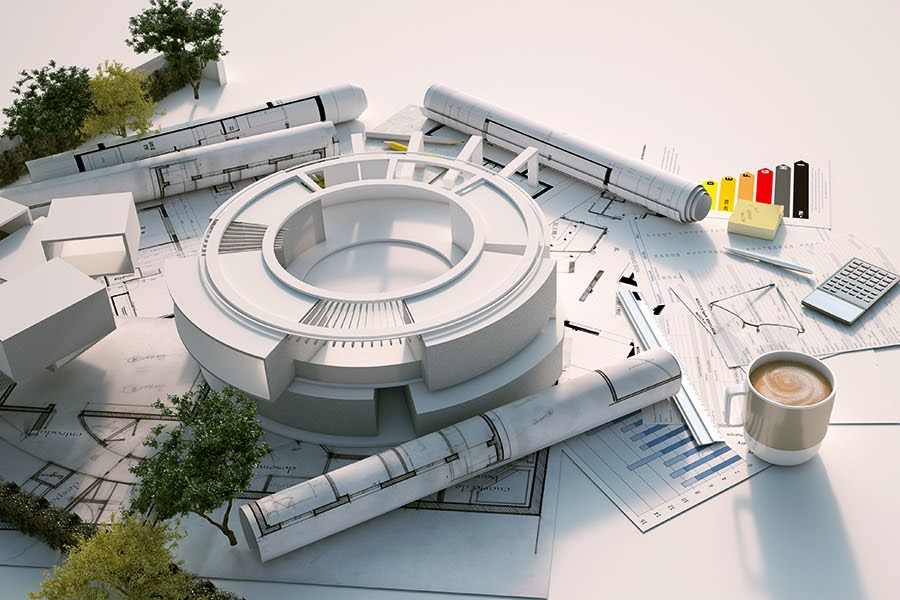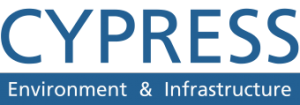In civil engineering, the design process is a multifaceted journey from concept to construction. It transforms vision into reality through meticulous planning and flawless execution. At each phase of the civil engineering design process, ingenuity and precision converge to give life to infrastructure and structures that shape the future of skylines and communities.
In this article, we explore the intricacies of the civil engineering design process. From initial planning to final construction, we shed light on the significance of each step. We also highlight the pivotal role Cypress plays in bringing inspiring concepts to life.

Understanding the Design Process
The civil engineering design process is a systematic, multi-phase approach that transforms ideas into functional, safe, and sustainable structures.
From the planning stage to the final approval, this process is what bridges imagination to reality. It ensures that our structures are not just aesthetically pleasing but also safe, sustainable, and cost-effective.
Initial planning and project requirements
Before the first blueprint is even drawn, initial planning is critical. This stage involves defining project goals, assessing environmental impacts, and understanding regulatory requirements. At Cypress, we take meticulous care to understand these requirements, ensuring every project starts on a solid foundation.
Defining project goals
Defining clear goals and objectives from the outset is essential before embarking on any infrastructure project. What is the purpose of the infrastructure to be built? What needs will it fulfill? What are the intended outcomes?
We place a strong emphasis on this initial planning step. Thoroughly understanding the project goals and requirements ensures that our designs align with the vision and expectations of both our clients and the communities the infrastructure will serve.
Assessing Environmental Impacts
Environmental considerations are integral to responsible civil engineering. We conduct comprehensive assessments to understand the environmental impacts of a project.
This involves analyzing potential effects on ecosystems, air and water quality, and the surrounding landscape. By doing so, we can design projects that not only meet functional requirements but also minimize harm to the environment.
Understanding regulatory requirements
The world of civil engineering is governed by an array of regulations and standards that must be adhered to. That’s why we place a significant importance on understanding and complying with these requirements.
This includes local, state, and federal regulations, as well as industry-specific standards. We ensure that our projects meet legal obligations while also contributing positively to the communities they are built within.
Conceptual design phase
The conceptual design phase is where creativity and engineering merge. Here, the core idea of the project takes shape. It involves preliminary sketches, brainstorming sessions, and the generation of innovative solutions.
Preliminary sketches and brainstorming
During the conceptual design phase, the project’s vision begins to manifest through preliminary sketches and brainstorming sessions. The engineers at Cypress come together during this phase to brainstorm creative possibilities and ideas.
Our team considers a range of innovative approaches and methods to transform the vision into a tangible reality. These early sketches and ideas serve as the critical foundation upon which the entire project is built.
Innovative solutions generation
In this phase, the emphasis is on generating innovative solutions. Our team of experts takes on the challenge of creating both functional designs and pushing the envelope of creativity.
Our team seeks solutions that are not just efficient but also innovative. This way, we contribute to the uniqueness and excellence of each project.
Aesthetically pleasing designs
We understand that design goes beyond functionality. It must also be aesthetically pleasing, integrating seamlessly with its surroundings. This is a hallmark of our work during the conceptual design phase.
Our team ensures that the project’s visual appeal aligns with the intended purpose and the broader environment.
In the conceptual design phase, our experts bring together their technical proficiency and artistic vision to give shape to projects that are operationally efficient and artistically compelling.
Preliminary design phase
During the preliminary design phase, the project’s journey takes a significant step forward as it transitions into a more tangible structure.
This phase involves a meticulous process of detailed planning. This is where every facet of the project comes under scrutiny. Let’s explore the key components of this phase:
1. Thorough site investigations
The cornerstone of the preliminary design phase lies in conducting thorough site investigations. We place great emphasis on this step as it involves a comprehensive analysis of the project site. Our team of engineers accesses the unique characteristics and challenges of the site.
This includes evaluating soil conditions, topography, and geological factors. These investigations are essential in providing engineers with the necessary data to make informed design decisions.
2. Detailed planning
As the project begins to take a more concrete form, detailed planning becomes paramount. Our team delves into the intricacies of project design, addressing various components such as foundations, structural elements, utilities, and environmental considerations.
This stage acts as the bridge between conceptual ideas and the practicalities of construction, ensuring that all aspects are well-considered and integrated into the project plan.
In the preliminary design phase, our comprehensive site investigations ensure that every aspect of the project is thoughtfully considered. This sets the stage for successful project implementation, where creative concepts are transformed into tangible structures.

Detailed design phase
The detailed design phase takes the project from concept to a comprehensive blueprint. It’s in this phase that every structural detail is carefully examined and considered. Let’s explore the key elements of this phase:
1. Comprehensive blueprint creation
In the detailed design phase, the project is meticulously documented. Every aspect of the structure is carefully detailed, from architectural elements to engineering specifics.
Our engineering team ensures that every design element aligns with the project’s vision and purpose and that all details are precisely captured.
2. Material selection and construction methods
The choice of materials and construction methods is a critical decision in the detailed design phase. The engineers select materials that are structurally sound, sustainable, and cost-effective. Simultaneously, construction methods are considered to ensure efficient and effective implementation.
3. Optimization for efficiency cost-effectiveness and sustainability
Cypress excels in optimizing designs for efficiency, cost-effectiveness, and sustainability. Every design detail is assessed with a keen focus on minimizing waste, reducing construction time, and enhancing the project’s overall sustainability.
This approach is integral to our commitment to delivering well-structured, efficient, and eco-conscious projects in the detailed design phase, preparing them for successful implementation.
Technical analysis and simulation
In the modern era, the integration of computer-aided design (CAD) software has transformed the landscape of structural design. This shift towards digitalization allows for 3D modeling and simulations. CAD serves as an invaluable tool in the design process. Let’s delve into the critical components of this phase:
1. Leveraging CAD software
Our engineers embrace CAD software’s power, enabling detailed 3D modeling and simulations. This innovative technology aids in identifying potential issues and streamlining designs.
Our proficiency in CAD ensures that every project undergoes thorough analysis, taking advantage of the precision and insight that digital tools provide.
2. Assessing structural integrity
Technical analysis and simulations extend beyond CAD, encompassing a meticulous evaluation of structural integrity. Our experts scrutinize the structural elements to ensure they meet industry standards and are capable of withstanding the intended loads and stresses.
3. Load-bearing capacities and external factors
In this phase, our team assesses load-bearing capacities, examining how structures respond to various loads, including live loads, such as occupants and equipment, and environmental loads, like wind and snow.
Additionally, our engineers investigate how the structure would respond to extreme events like earthquakes or harsh environmental conditions.
Incorporating technical analysis and simulation, Cypress ensures that designs are not only visually impressive but also structurally sound.
Value engineering and optimization
Value engineering is a critical phase in project development. We focus on enhancing a project’s value while minimizing costs.
1. Maximizing project value
Our goal during the value engineering phase is to maximize the overall value of the project.
We scrutinize every aspect of the design to identify opportunities for improvement, cost reduction, and enhanced performance. By optimizing the project, we ensure that our clients receive the best value for their investment.
2. Balancing cost and quality
Optimizing a project doesn’t mean compromising on quality or safety. Our engineers find a balance that allows us to reduce costs while maintaining the highest standards of quality and safety.
With this approach, we achieve a cost-effective result while also creating robust and reliable structures. In the value engineering and optimization phase, our expertise lies in striking the perfect equilibrium between value, quality, and cost.
Review, validation, approval
Following a comprehensive design process, the final step is an essential one – review, validation, and approval. This phase is where the culmination of hard work and creative thinking undergoes a rigorous examination.
After the design phase, a critical step is ensuring regulatory compliance. This requires that every design adheres to local, state, and federal regulations, as well as industry-specific standards.
Beyond regulatory considerations, every aspect of the project is subject to thorough scrutiny. The team conducts detailed assessments to validate that the design meets the highest safety and quality standards.
This includes evaluating structural integrity, load-bearing capacities, and the response to external factors like environmental conditions and seismic events.
The review, validation, and approval phase is the final checkpoint before a project moves into the construction phase.
It’s a critical quality assurance step, where every detail is meticulously inspected to verify that the project is not only compliant with regulations but also capable of delivering the highest standards of safety and quality.

Conclusion
The civil engineering design process is a complex yet beautifully orchestrated journey. Each phase contributes to the creation of structures that stand the test of time.
Cypress’s dedication to excellence and commitment to delivering projects that shape the world we live in highlight its significance in civil engineering.
As we navigate through the complexities of the design process, we recognize that, in every blueprint, there is the potential for progress, development, and a better future.
